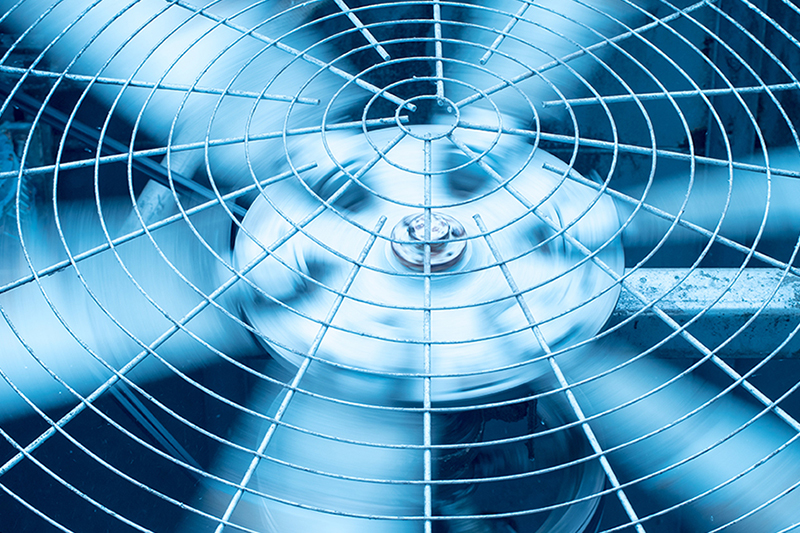How Often Should You Replace Your HVAC Air Filter?

Regularly changing the air filters on your system is an important but often overlooked aspect of system maintenance that has real impacts on system health and performance. Replacing your HVAC system’s air filter regularly is not only crucial for maintaining your Skokie home’s indoor air quality, but it also ensures that your heating and cooling system runs properly without issues.
Over time, filters can become clogged, restricting airflow and straining your HVAC system. In this guide, the HVAC pros at Shavitz Heating and Air Conditioning will walk you through how often you should replace your HVAC filter, why it’s important, and how factors like filter type and MERV ratings can impact your system’s airflow and performance.
Why Your HVAC System Needs Clean Air Filters
Your HVAC system relies on a steady, unobstructed flow of air to function properly. Your HVAC system’s CFM (Cubic Feet per Minute) is essentially the lifeblood of its operation—determining how much air is circulated throughout your home. Just think of CFM as how much air your system is conditioning per second.
When your air filter becomes dirty or clogged, it restricts airflow and reduces the system’s CFM, which can lead to higher energy bills, decreased efficiency, and even premature system failure.
As CFM goes down, your system is not only delivering less conditioned air to your home, but it’s working harder to do so.
Filters Become More Restrictive Over Time
Over time, as your air filter traps dust, dirt, and debris, it becomes increasingly restrictive. This buildup of particles not only hampers airflow but also reduces the effectiveness of your HVAC system. As the filter gets dirtier, the CFM (airflow) decreases, making it harder for your HVAC system to cool or heat your home effectively.
Signs of a Restrictive Filter:
- Decreased airflow from vents.
- Strange smells in your home.
- Longer cooling or heating cycles.
To prevent these issues, it’s crucial to replace your filter as it becomes clogged. Keeping a regular replacement schedule ensures your system performs at its best and your indoor air quality remains optimal.
MERV Ratings and Their Impact on CFM
Have you ever noticed that your filters have a rating on them? MERV, or Minimum Efficiency Reporting Value (sometimes FPR), measures how well an air filter traps particles of different sizes. The higher the MERV rating, the finer the particles the filter can trap. However, a higher MERV rating also means more resistance to airflow, which can reduce your system’s CFM.
- Low MERV Ratings (1-4): These filters are designed for basic filtration and generally offer low resistance to airflow, keeping CFM high. However, they do not capture fine particles like allergens or dust. These are the best filters to use for your system, as they put the least amount of strain on the system, but they do so by providing less protection for you and your family.
- Mid-Range MERV Ratings (5-12): As MERV ratings reach the 5-12 mark, they become increasingly restrictive, offering better protection at the cost of system performance.
- High MERV Ratings (13-16): High-efficiency filters with a MERV rating of 13 or higher can trap small particles like bacteria and smoke. While they offer superior filtration, they can reduce CFM, especially if your system is not designed for higher resistance.
If you’re using a filter with a higher MERV rating (5-16), the filters may claim a 3-month lifespan, but they truly must be replaced more frequently. Filters in this range are already restrictive, but as dust accumulates, that restriction increases. We recommend replacing filters in these ranges every month to ensure the system isn’t working too hard.
MERV Ratings and Allergens
If anyone in your home suffers from allergies, the MERV rating of your HVAC filter plays a crucial role in improving air quality. Filters with higher MERV ratings can capture smaller particles, such as:
- Pollen
- Pet Dander
- Dust Mites
- Mold Spores
- Bacteria and Viruses (for high MERV filters)
A filter with a MERV 11 or higher is recommended to reduce allergens in your home, which is especially beneficial during allergy season. However, as we mentioned, high MERV filters also create more resistance to airflow, which can decrease system efficiency if not replaced regularly.
Alternatives to High MERV Ratings for Indoor Air Quality
If you’re concerned about airflow restrictions from high MERV filters, but still need a way to combat allergens and other particles in the air, there are other ways to improve indoor air quality.
Whole-home air purifiers and air scrubbers work alongside your HVAC system to capture and neutralize allergens, bacteria, and even odors—without putting extra strain on your equipment.
These solutions can deliver hospital-grade filtration and keep your air cleaner year-round, making them an excellent choice for households with allergy sufferers or anyone wanting fresher, healthier indoor air.
Different Types of HVAC Filters
There are several different types of HVAC filters, each with unique benefits and drawbacks. Choosing the right one for your system can impact both your air quality and your system’s performance. Here are the most common types:
Pleated HVAC Filters (1” and 4”)
Pleated filters are one of the most common types of filters used in HVAC systems. They are made from folded layers of material, which increases the surface area and allows the filter to capture more particles. They come in different thicknesses, such as 1” and 4”, with the 4” filters offering higher filtration capacity and a longer lifespan.
- 1” Pleated Filters: Good for general household use and standard HVAC systems.
- 4” Pleated Filters: Better for homes with high levels of dust or allergens, and can last longer before needing replacement.
Electrostatic HVAC Filters
Electrostatic filters use static electricity to attract particles, making them more effective at capturing dust, pollen, and other allergens. They are reusable and can be washed, though they require regular cleaning to maintain their efficiency.
Fiberglass HVAC Filters
Fiberglass filters are the most affordable option, offering basic filtration. However, they are less efficient at trapping small particles and tend to need replacement more often.
HEPA HVAC Filters
High-Efficiency Particulate Air (HEPA) filters are the gold standard for trapping fine particles, including bacteria and viruses. They offer superior filtration but may reduce CFM significantly and may not be suitable for all HVAC systems.
How Often Should You Replace Your HVAC Air Filter?
So, how often should you replace your HVAC filter? While the answer depends on the type of filter and your home’s specific needs, a general guideline is as follows:
- Standard Fiberglass Filters: Replace every 30-60 days
- Pleated Filters (1” and 4”): Replace every 60-90 days
- Electrostatic Filters: Clean or replace every 3-6 months
- HEPA Filters: Replace every 6-12 months (or as recommended by your HVAC manufacturer)
If you have pets, allergies, or live in a dusty environment, or you notice a change in your HVAC system’s airflow and efficiency, you may need to replace your filter more frequently.
Trust the HVAC Filter Experts in Chicagoland. Trust Shavitz.
Regularly replacing your HVAC air filter is a simple but crucial step in maintaining your system’s efficiency and indoor air quality. By understanding factors like CFM, MERV ratings, and filter types, you can choose the right filter for your needs and ensure your HVAC system runs smoothly for years to come.
Need help selecting the right air filter, or unsure when to replace yours? Contact Shavitz Heating and Air Conditioning today to schedule a professional HVAC inspection and keep your system running at peak performance! Call 847-861-5559 or request service online.

